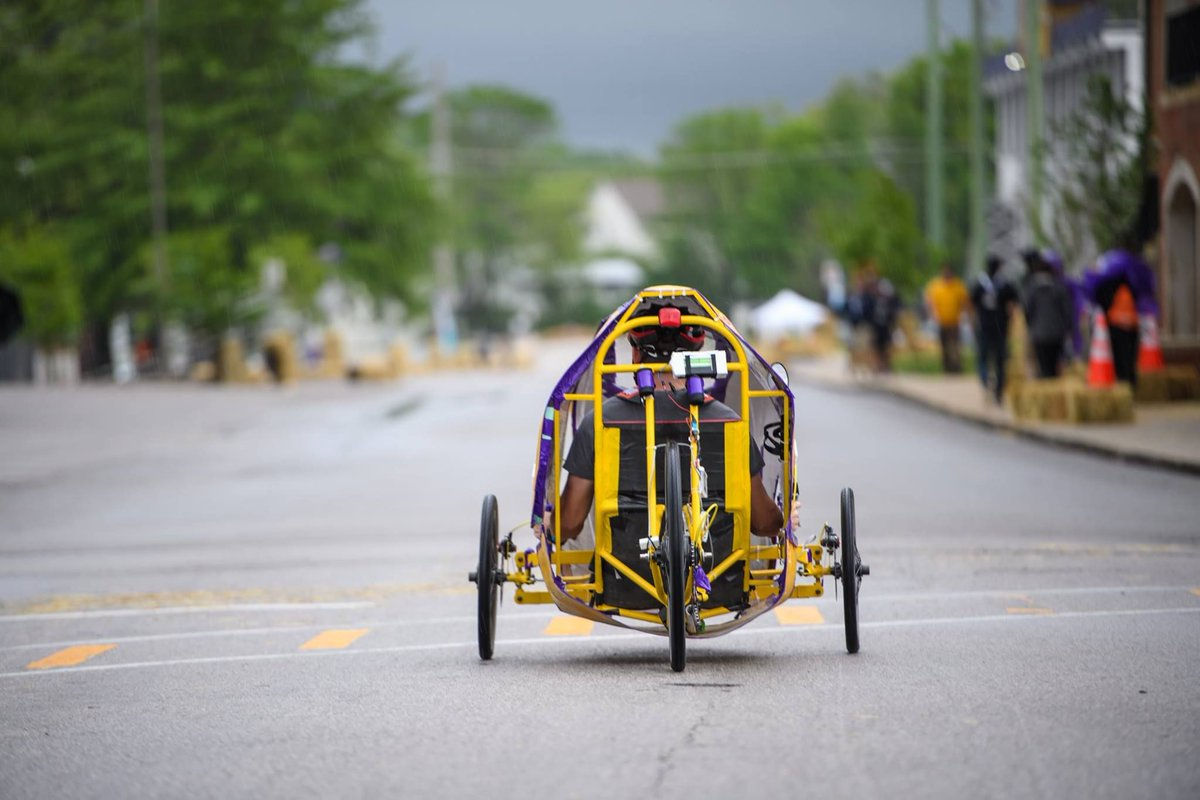
The Fairing
The Fairing
The Design Process
Different factors were taken into account when deciding on which type of fairing to utilize for the vehicle. The three conditions looked at are as follows:
-
Performance — In this sense, the performance of the fairing would be how aerodynamic it would make the vehicle
-
Foldability of the Fairing — As the ability to fold is the main innovation for this year's vehicle, the fairing would need to either fold along with it or be removed altogether easily
-
Manufacturability — Tying in with the fact that the time to manufacture the entire vehicle is limited, a fairing that is easily manufactured would be best

Figure 2: Front half of the fairing for the 2016-2017 HPV "Ke Koa" team

Figure 1: Initial design concepts for the HPV fairing
From the conditions, the clear choice for the fairing was the hybrid model. It provided the perfect balance between performance and foldability, which were the two conditions weighed the most. A model of this type of fairing is shown in Figure 3.

Figure 3: Old design concept for a hybrid fairing
The Front/Back Material
With the type of fairing decided, the materials it would be made of were the next decisions to be made. As the design is a hybrid fairing, consisting of both solid pieces and fabric pieces, decisions for both sections of the fairing were made separately. In terms of the front and back material of the fairing, it was determined that the material would have to allow for a more streamlined shape to the fairing, allowing for better aerodynamics. The materials considered were carbon fiber and fiberglass, two of the most common materials for fairings.
The considerations taken into account when looking for a material for the front and back portion of the fairing are as follows:
-
Weight of the material — As the frame would already accost for a lot of the total weight of the vehicle, a fairing that contributed little to that total weight would be ideal
-
Overall cost — Limited funds make cost in any decision an important factor
-
Strength of the material — In case of a rollover or accident, the fairing would need to be strong to ensure the rider inside stays safe
-
Manufacturability — A material that is easily malleable to allow for the aerodynamic shape we need is best
Based off these considerations, the material chosen to be the best for this year's fairing was carbon fiber. Though it is the most expensive of the two choices considered, it was chosen ultimately for its better strength to weight ratio. It's ability to maintain the rigidity and strength necessary to prevent failure while simultaneously lowering the overall weight of the fairing made it the ideal choice.
Currently, the designs made so far are up to date with the fairing subsystem. The biggest issue that needs to be resolved involves the mounting hardware. The current mounting design does not guarantee the proper alignment of the rear fairing. Another issue that has not been completely resolved involves the front fairing. The pedals are designed to be almost completely vertical so that the wheels will still maintain contact with the ground when the bike is folded. This forces the design of the front fairing to be high enough so that it clears the pedals. The current model clears the pedals but might not be enough to clear the riders’ feet as they operate the vehicle. However, if the fairing is too high, rider visibility in front of the vehicle will become an issue. An option that needs to be explored is to cut a portion of the front fairing and replace it with a transparent material like plexiglass or polycarbonate.
What's Next?
However, after careful consideration, the hybrid fairing was deemed as not the best choice for the team after all as simulated models showed that it would interfere too much with the drivetrain subsystem. Fixes to this problem could not be made without widening the vehicle by an amount that we simply could not allot. With this in mind, the fairing was changed to a partial fairing, only covering the front end and back end of the vehicle. This new model can be viewed in Figure 4.
Along with allowing the vehicle to accommodate the drivetrain's movement, the rationale for this change would also be the increase in performance and ergonomics of vehicle in the endurance event rather than the speed event. The main driver for performing well in the speed event would first be the rider's power output and then the aerodynamics. A full fairing with an average or below average rider would result in a low score for the speed event. A partial fairing with an average or above average rider would be able to perform as good or better than a full fairing vehicle with an average rider.
Figure 4: Current design concept for a hybrid fairing

As the main innovation for this year's vehicle is to have the frame fold, the fairing would have to accommodate this feature. The new objectives for the fairing this year are for it to be lightweight, easily removable, and perform well in the speed and endurance events. The three designs that were considered this year were the full composite fairing, a full fabric fairing, and a hybrid of the two types put together. Figure 1 shows the original concepts for these designs.
After a certain speed, air resistance accounts for the majority of the total force acting to slow the vehicle down and increases the amount of power needed to move the vehicle. The fairing reduces aerodynamic drag as the vehicle moves through the air. A well-designed fairing allows the rider to move the vehicle with less force, essentially making the rider's input of power more efficient.
